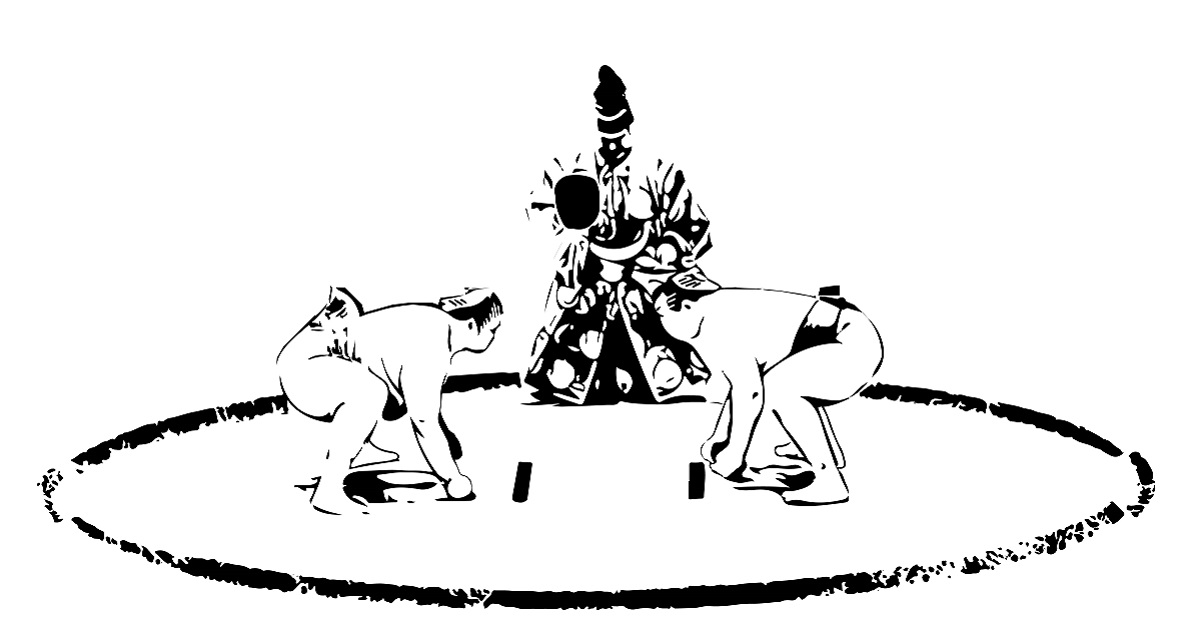In sumo, the Gyoji is more than just a referee. They control the flow of the match, ensure fairness, and uphold centuries-old traditions. Their elaborate attire, distinct voice, and precise movements make them an essential part of the sumo experience, offering spectators a deeper connection to Japanese culture.
What is a Gyoji
A Gyoji is an official in Japan’s national sport of sumo who judges bouts in the ring and ensures that matches proceed smoothly. In addition to declaring the winner, a Gyoji gives starting signals and performs ceremonial movements, playing an important role in creating the atmosphere of the bout. During matches, they stand in the center of the ring, call out loudly, and quickly adjust their position according to the wrestlers’ movements. They clearly announce the winner to the audience, and in cases of possible misjudgment, the bout may be subject to a “mono-ii” (judges’ conference), where the final decision is made. In sumo history, the Gyoji has been more than just a referee; they are also a symbol of tradition and culture.
Main Roles of a Gyoji
A Gyoji manages the flow of a bout from start to finish. Their calls and movements have long histories and carry specific meanings.
| Role | Detailed Description |
|---|---|
| Starting the match | Calls out “Hakkē-yoi, Nokotta” to prompt both wrestlers to begin |
| Declaring the winner | Raises the gunbai (war fan) and announces the winner’s shikona (ring name) |
| Managing the flow | Adjusts the rhythm and mood of the match to keep it smooth |
| Monitoring fouls | Watches for prohibited or dangerous moves and stops the match if needed |
| Preserving ritual | Through attire and movements, upholds sumo’s tradition and dignity |
The Gyoji supports sumo in many ways, and their actions are not just about enforcing rules but also highlighting the cultural beauty of sumo.
Attire and Tools of a Gyoji
A Gyoji’s attire is colorful and strongly influenced by the court culture of the Heian period. The look represents both formality and rank, and their tools have symbolic meaning.
| Item | Description |
|---|---|
| Costume | Colorful kimono; becomes more elaborate with higher rank |
| Eboshi | Black cap derived from Heian court dress, symbolizing authority |
| Gunbai | Fan-shaped tool for declaring the winner |
| Waraji sandals | Footwear that supports movement in the ring |
The gunbai is the Gyoji’s emblem, making their decision visible to all. Their attire and tools add visual appeal for spectators, enhancing the grandeur of the matches.
Gyoji Ranks and Responsibilities
Like wrestlers, Gyoji have a ranking system, with differences in the importance of matches they officiate and in the formality of their attire.
| Rank | Characteristics |
|---|---|
| Tate-gyoji | Highest rank; officiates yokozuna bouts |
| San’yaku Gyoji | Officiates bouts involving sekiwake and komusubi |
| Makuuchi Gyoji | Officiates top-division bouts |
| Jūryō Gyoji | Officiates second-division bouts |
| Lower-division Gyoji | Officiates matches of younger or less experienced wrestlers |
The Tate-gyoji carries a gunbai with a paulownia crest and wears a more ornate eboshi. This role requires both deep experience and the ability to handle great responsibility.
History and Cultural Background of the Gyoji
The Gyoji’s history dates back to when sumo was performed as a Shinto ritual in ancient Japan. At the time, matches were held before the gods, and a referee was appointed to ensure fairness. Many of the Gyoji’s costumes and movements are rooted in Shinto ritual, and traditions such as throwing salt and bowing before and after matches have been preserved. The ranking system for Gyoji was established in the Edo period, and rules for attire and titles were formalized. Today, whether at the Ryōgoku Kokugikan or during regional tours, audiences pay attention to the Gyoji’s movements and voice, enjoying their presence as part of the match’s appeal.
Qualities and Training Required of a Gyoji
A Gyoji needs physical stamina, sharp judgment, and an understanding of tradition. New Gyoji learn basic movements and how to project their voice before gaining experience through years of officiating bouts.
| Quality | Description |
|---|---|
| Judgment | Ability to instantly evaluate wrestlers’ movements |
| Voice power | Delivering clear and strong calls to wrestlers and spectators |
| Etiquette | Maintaining strict formality in gestures and speech |
| Stamina | Endurance for long match schedules |
By mastering these qualities, a Gyoji can confidently officiate in the ring.
Conclusion
The Gyoji is both a judge of sumo matches and a custodian of tradition. Their elaborate attire, commanding voice, and precise decisions make sumo more captivating to watch. For foreigners, learning about the Gyoji deepens understanding of sumo and offers insight into the depth of Japanese culture.





コメント